Artist Spotlight
Wendy McGowen creates daily

Wendy McGowen, aka postalorphan, is a long-time art journaler who lives and works in Spring, TX. A software engineer by day, she uses art journaling and mixed media to escape from the structure and linearity of her work. She considers herself a lifelong learner, always looking for new techniques to expand her artistic horizons.
What is art journaling to you?
Art journaling is my escape, both from daily stress and from the rigidity of my work as a software engineer. It’s a form of self-care – allowing me to step back from the world, slow down, and listen to my soul. And it’s a safe way to express my inner artist in a private, non-judgmental format – no rules!
I can experiment with new techniques and end up with a piece that I love, or not –it doesn’t matter if I don’t like it; what matters is that I was creating. I can get completely lost while creating in my art journal, totally absorbed in the process – if you’ve ever read about the flow state, that’s totally where I go when I’m creating.
What does community do for your art?
Community gives me a safe space to be my artist self. Being among like-minded artists who ‘get it’ when it comes to my art journaling is comforting – I’m not so fearful of sharing my pages when I know that the audience will understand where I’m coming from. It took me years to become brave enough to start posting my art on Instagram.
How do you live a creative life? How do you incorporate journaling into that?
I do something artistic every day – I have several journals that I work in regularly. I have a small journal that I work in daily (a practice that I started 5 years ago, thanks to Draw Riot aka Tori Weyers) – just little artworks, no writing. Then I have a larger art journal that gets worked in less frequently – again, mostly art with little or no writing. In addition to these two, I also have a journal that I write in almost daily; but again, it’s also an art journal, as I’ll do collages or simple watercolors in it as well.
I also enjoy participating in online challenges, like the 100 Day Project or Daisy Yellow’s ICAD (Index Card a Day). They help me break out of creative ruts, especially when I decide to follow the prompts.
What does your creative space look like? Where do you journal?
I’m fortunate to have an art studio, with lots of storage and a large desk area to work on, although that’s almost always covered with stuff. Because it’s a dedicated room I can leave projects out on my desk while I’m working on them. Oh, and I can shut the door when it’s an absolute mess, which is almost always.
I’ll either journal in there (on the roughly 12×12” clear space that seems to be the norm for my art desk), or at my “work” desk, which is in another room in my house. I’m working from home for the foreseeable future, which has its perks – I can play in my journal during boring meetings; I just have to be careful not to have paint on my face if I have to go on camera for a meeting!
Do you have creative routines?
Music – I must have music playing while I work. Usually Pandora, or a mix from Youtube. Music keeps my monkey mind busy and silences my inner critic.
What is your favourite art journal page that you’ve ever made and why?
While I don’t really have a favorite, I am particularly fond of this page. I made it during an online session with Kiala Givehand – it was created based on the cards she pulled from her Mixed Media Inspiration Deck. I’m more into spontaneous crafts, so this was very different from how I usually work, so I was surprised by how challenging it was to basically follow a “recipe”, and yet, at the same time, how much it really opened up my creativity.
What is your biggest barrier to creating? And how do you overcome that hurdle?
The oh-so-scary “blank page” that so many other artists face – to get past it I’ll start with some scribbles, or make some marks with a pencil, sometimes using my non-dominant hand. Then I might brayer on some paint or gesso, add some collage bits – basically just make a background with no specific goal in mind. Once I have a background started, the rest of the page seems to just fall into place.
Have you ever made something you don’t like? What did you do?
All the time! I just move on – I’m making art, and that’s what matters. It doesn’t matter if it’s good or bad or ugly or what – the creation of the page is the point. If it’s really, really bad or really annoying to me, I’ll just paint over it and start again.
Have you ever been through artist block? How did you return to your work?
I call it a “creative stall” instead (it sounds less intimidating). When it happens, I step away from my art room, my supplies, and my journals, and spend time absorbing ideas and inspiration from a variety of sources: books, online exhibits, museums (when I’m fortunate enough to get to go). Sometimes a single piece will trigger multiple ideas, and I’m off again.
How has Get Messy impacted your creativity?
In so many ways … Get Messy has provided that community – a safe place to share, a group of online cheerleaders that keep me accountable and motivated. It’s also a constant source of inspiration – the challenges, the lessons, the artwork posted by others.
As so many others have said, with Get Messy I have found my tribe.



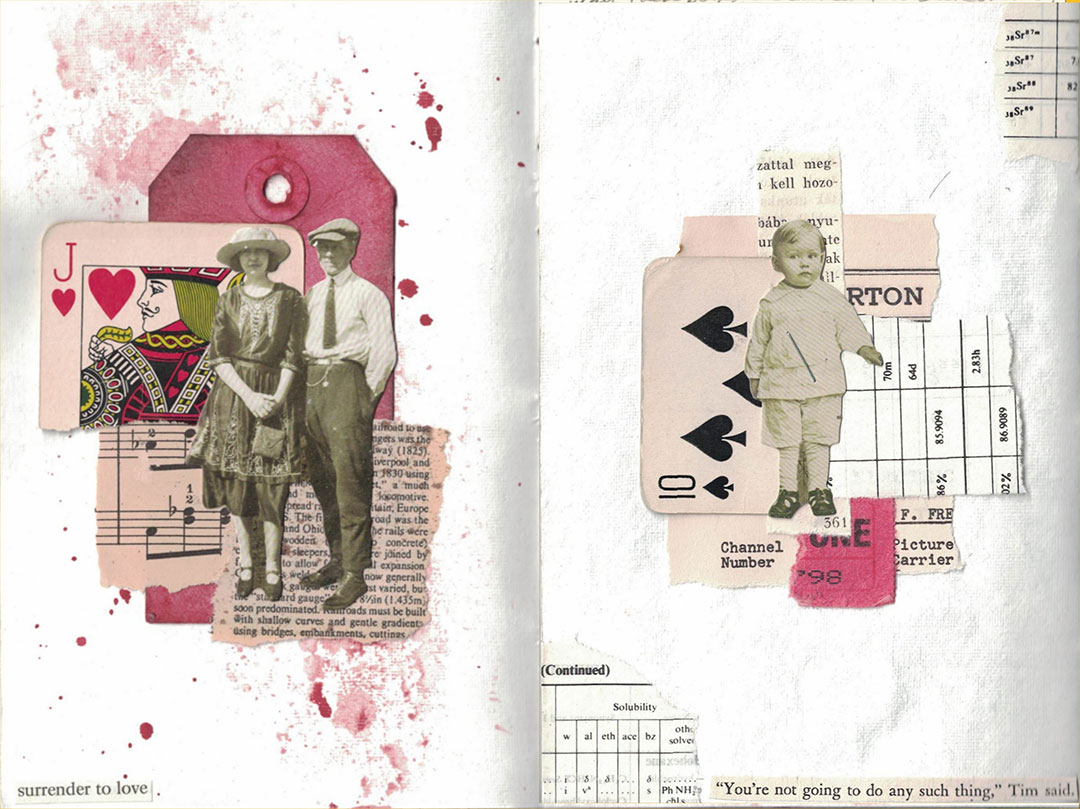
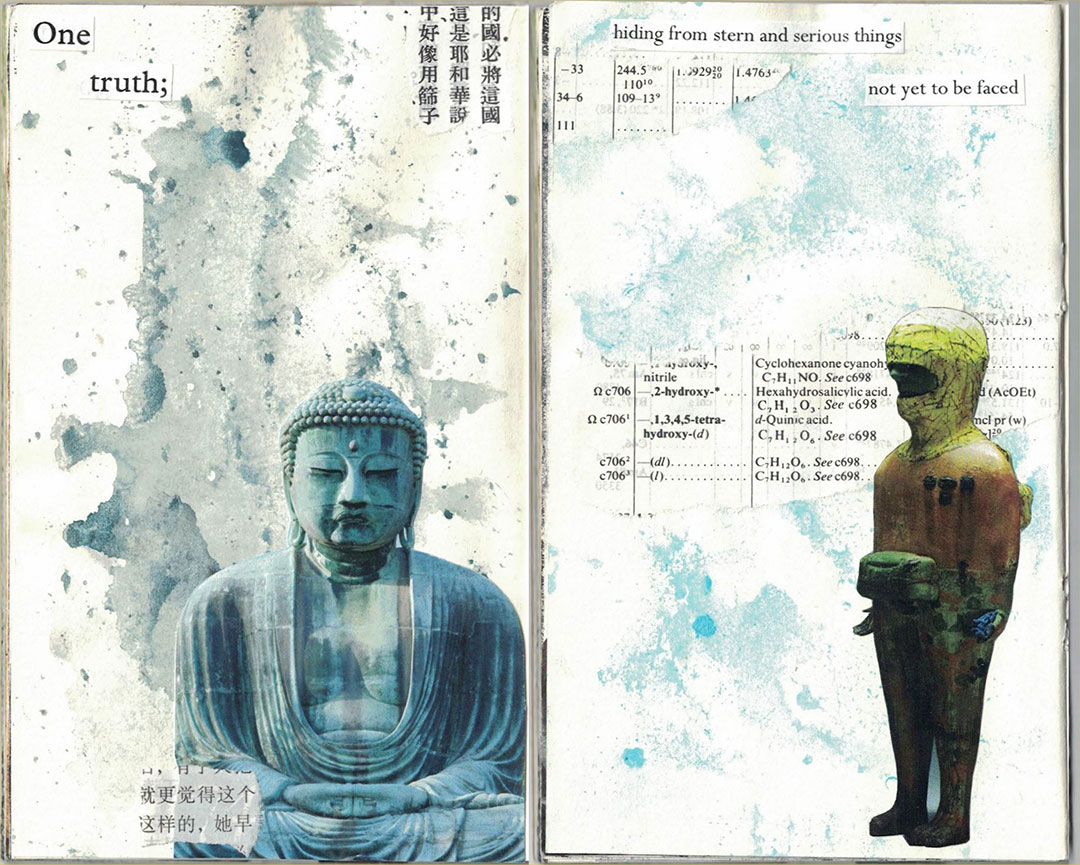

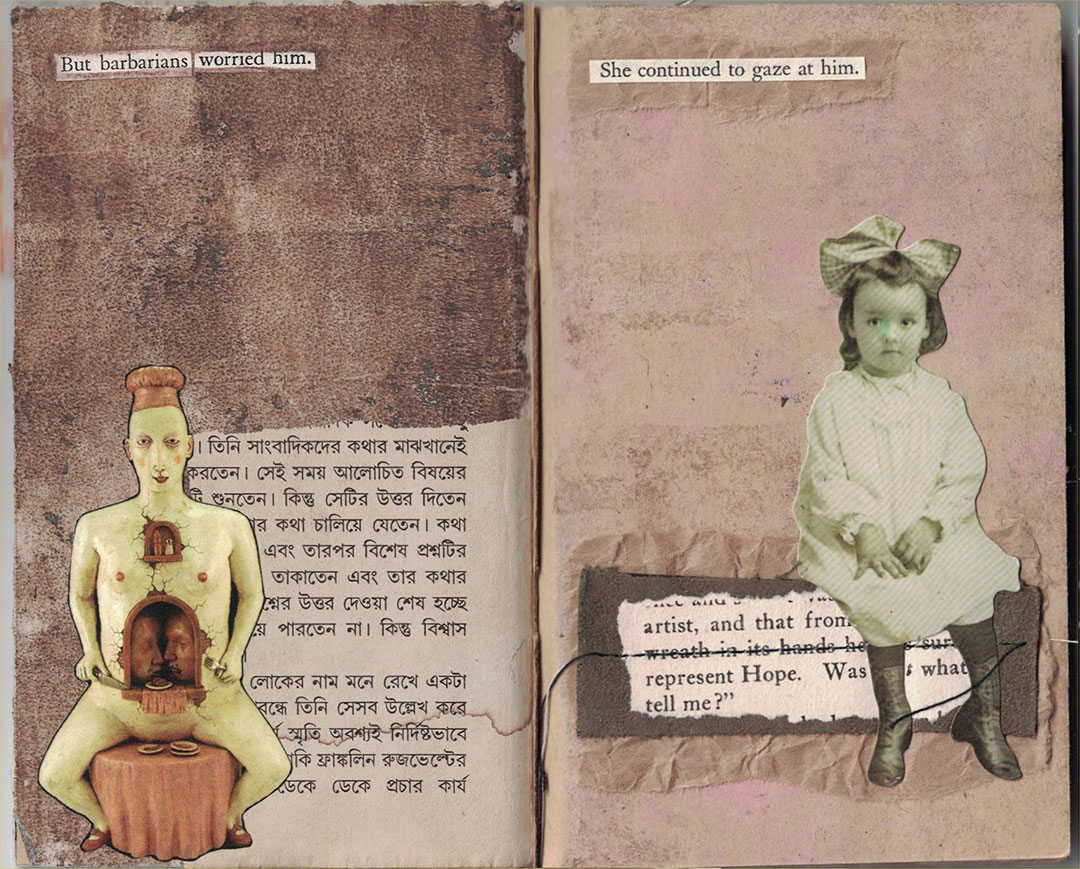

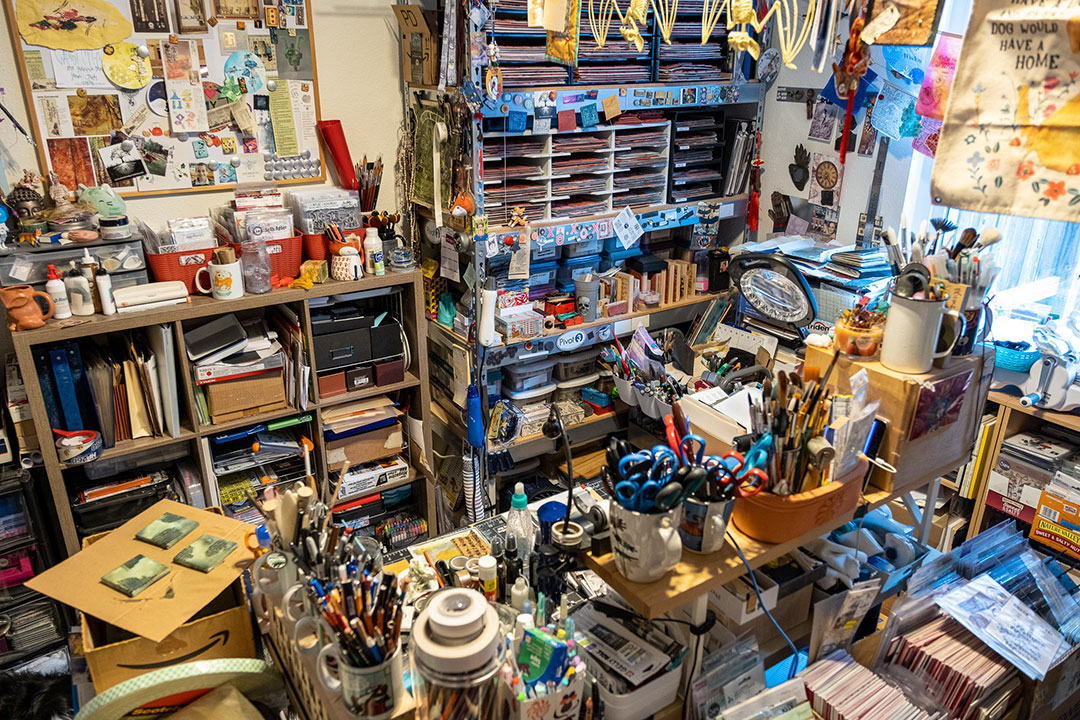
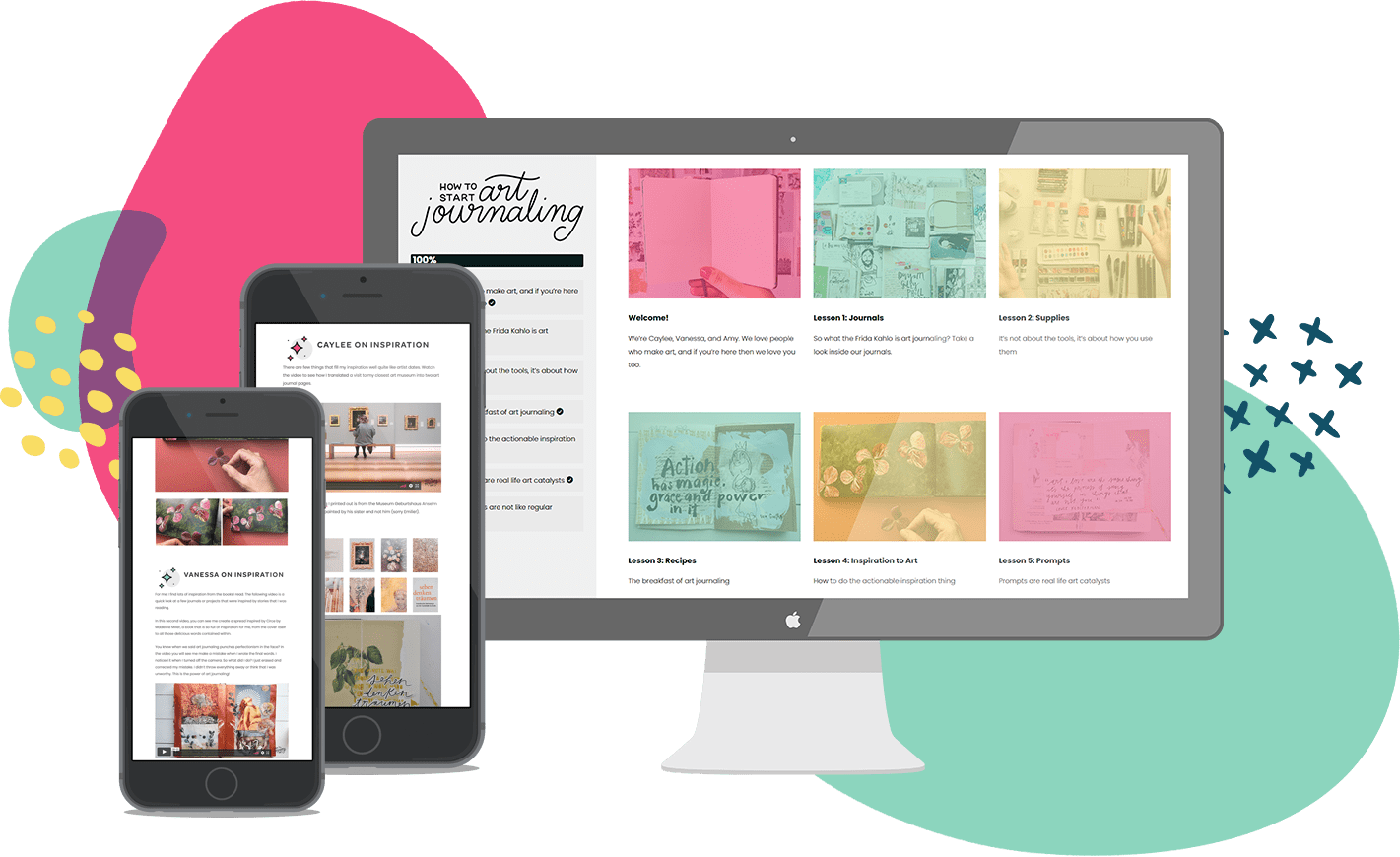
✨ Free class for creatives ✨
In How to Start Art Journaling, we’ll walk you through the art of art journaling, including how to start doing (🙌) and make your very first art journal page (even if you’ve never even opened an art journal before).
What journal do you use?
I don’t have a “go to” brand of journal – I’m all over the map here! As far as commercial journals go, I’ve used Moleskines in a variety of sizes and paper types, various brands of sketchbooks, as well as different sizes of traveler’s notebooks (such as Midori). And recently I worked in a small ring binder journal that had the best kraft paper pages – they took watercolor and acrylic beautifully and were a lot of fun to work on. But mostly I work in handbound journals, using various types of papers (sketch paper, kraft paper, handmade paper pulled out of purchased journals, old book pages). For my daily practice, which is mostly collage work, I use these small, cheap journals I picked up at Walmart (sadly, they’ve been discontinued, so once I’ve gone through the stash I have I’ll have to find a replacement). I guess the point here is that you can art journal in anything!
What is your one *must have* supply?
My gelli plate … wait, no, my stencils … no, no, it would be my Stabilo All pencils … oh, and then there’s all my collage stuff, my acrylic paints, my watercolors …. do I have to pick just one?? This is like that “what would you take if you were going to be stranded on an island” question – I never could come up with an answer to that one. Nope, no favorites here; I can’t pick just one!
What do you make when you don’t know what to make?
Backgrounds – usually I’ll spend a few hours making backgrounds with my gelli plate, on tissue paper or book pages, using acrylic paint and stencils. It’s a great way to experiment with new techniques without committing them directly into my art journal, and it gives me a nice, thick stack of papers to play with later, which is especially handy when I’m short on time and want to create. Sometimes I’ll print directly into my journal, but that depends on which journal I’m currently working in. I’ll also do watercolor backgrounds directly in my journal (again, depending on the journal); I’ll later collage on these to complete the page.
What is the most important (non-tool) thing to your creative practice?
Okay, this is almost another of those “what’s your favorite” questions … but I would say found words from old books. I go through them while I’m watching TV and cut out interesting phrases that jump out at me. I keep these in a tin on my desk, so it’s close by while I’m working. I love it when I create a collage and then find the “perfect” phrase to go with it. Serendipity!
Who are your favourite Messy artists?
The original – Teesha Moore, of course. So many others – Marieke Blokland, Effy Wild, Willowing, Tori Weyers (she’s responsible for my daily art practice in my little journal), Dee Dee Catron, … there are so many; the list is very long!
What’s the best art advice you’ve ever received?
Do. Not. Compare. Don’t compare your work to anyone else’s. Don’t compare your start to someone else’s middle – I learned this very early on. My early art journal pages were very simplistic, nothing like what I was seeing from artists like Teesha Moore. Give yourself the time and space to grow into your art journal practice.
Advice to new art journalers:
Create daily if you can – keep a small journal for some sort of daily practice. A smaller journal is not as intimidating because there’s less space to fill on each page. Making it an inexpensive journal helps as well, because that takes away any feelings of “wasting” a good journal. Slap on some paint, make some marks, glue on an image – just get your creativity moving.
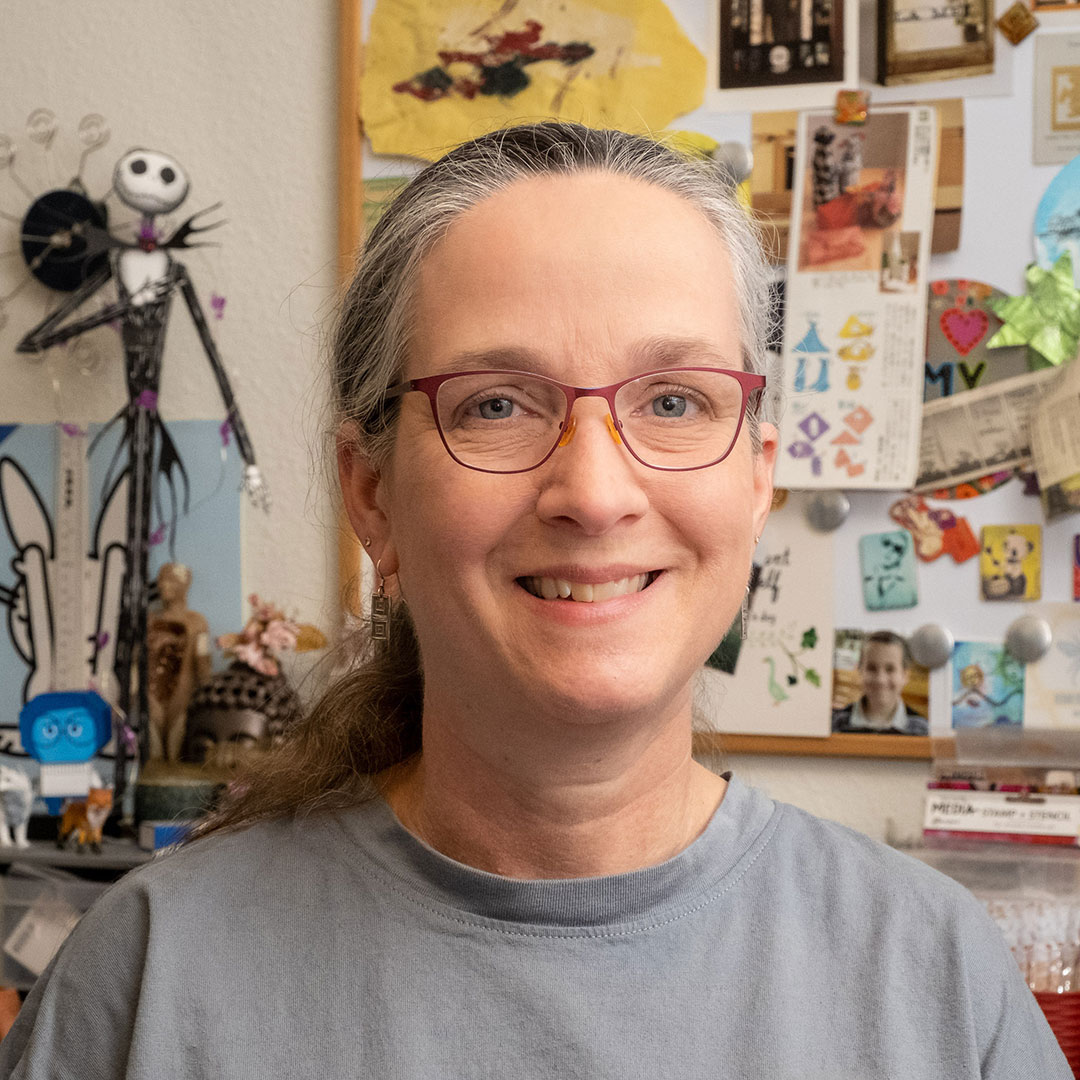
Wendy McGowen
Wendy McGowen, aka postalorphan, is a long-time art journaler who lives and works in Spring, TX. A software engineer by day, she uses art journaling and mixed media to escape from the structure and linearity of her work. She considers herself a lifelong learner, always looking for new techniques to expand her artistic horizons.
